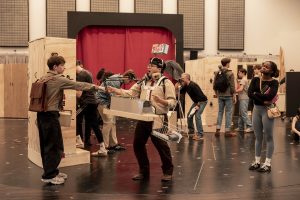Among the racial unrest at the University of Missouri, student and faculty protesters finally rejoiced after the resignation of President Tim Wolfe last Monday.
Protests can stem from social issues that upset the campus community; in this case, the problem of racial prejudice had been hanging over the University of Missouri like an ominous dark cloud. There are allegations that Wolfe had been handling racial matters during his term poorly, dismissing multiple complaints of racism that took place on campus. From slurs to harassment, racial incidents had always plagued the 7 percent African-American population.
In response to Wolfe’s all-talk-and-no-action take on these incidents, Jonathan Butler, a student of the University of Missouri, started the protest with a hunger strike. Later, African-American players from the university’s football team banded together and boycotted all games until the president resigned. With the combined pressure of both parties, Wolfe was out within 48 hours.
This was not the first account of student activism, nor was it the only successful one. This event not only indicates that a step toward social justice has advanced in the institution, but it also demonstrates the power of the student body. Reformation at the collegiate level does not happen because only as a result of the administration; more significantly, it is attributed to and influenced by the voices of students. Change is brought about by both the need and desire for it—it cannot occur without one or the other.
In the same week, the University of Missouri named Michael Middleton, an African-American law professor and deputy chancellor emeritus, as the interim president. In light of the situation, students all over the country have declared their support for the betterment of the University of Missouri community, posting with hashtag #InSolidarityWithMizzou across multiple social media platforms.
Of course, this does not mean that the fight for racial equality has ended for the university. With the change in administration and an active body of students, an inclusive campus community will be achieved in the near future.












Be First to Comment